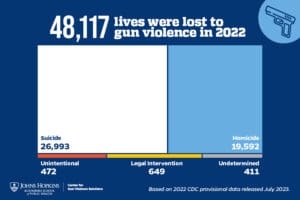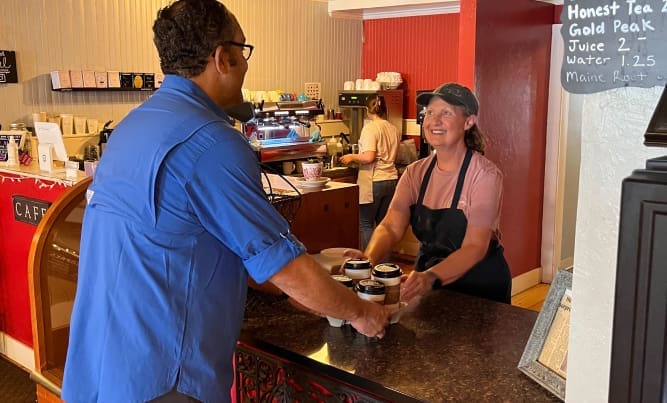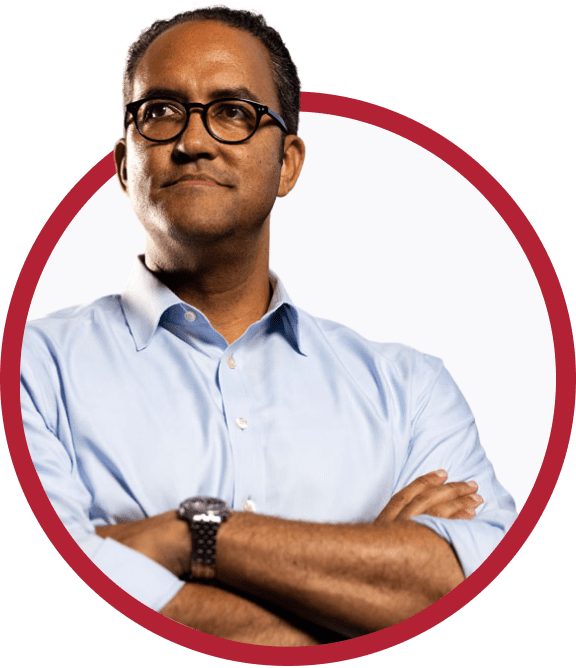On May 24, 2022, a fourth-grade classroom at Robb Elementary School in the city of Uvalde, Texas — a small, quiet community that I represented in Congress — became a war zone. A vicious massacre tragically took the lives of nineteen beautiful, innocent children and two dedicated, brave teachers forever. It’s infuriating. It’s heartbreaking. It was preventable. We know how to stop gun violence — the steps are many. But they require our immediate attention to reduce its devastating impacts.
Deaths in Afghanistan = Firearm Deaths from Mass Shootings in America
From 2009 to the gun violence in Uvalde County, 1,565 Americans had been killed in mass shootings. That’s more than the number of U.S. military personnel killed in hostile action in Afghanistan over the same period. We added the names of Tulsa, Uvalde and Buffalo to those of El Paso, Sutherland Springs and Sandy Hook. More parents are going to have to suffer the unbearable burden of burying their own child because of gun violence.
Yet, neither horrifying headlines nor stunning statistics have generated substantial legislative action focused on how to stop gun violence. This inaction has caused the public, the media, and some of those same elected officials to believe that nothing can be done to prevent gun violence. But that simply isn’t true.
Eliminating Gun Ownership or Having More Guns Aren’t Viable Solutions to Gun Violence

Photo: Youth Violence on the Rise. Gun related deaths now kill more of America’s kids and teenagers than motor vehicle accidents.
There is not one piece of legislation that can prevent all mass shootings. However, there are many things that we can do to save lives and prevent gun violence. Family members often play a critical role in identifying early warning signs of mental illness and domestic violence. Recognizing these signs early can be crucial in preventing escalation to more tragic outcomes. By supporting mental health initiatives and public health approaches to preventing violence, we can create a safer environment for all.
I believe in the plain language of the Second Amendment. I’m a gun owner. In Congress I had an A rating with the National Rifle Association, and they supported my re-election campaigns. But while in Congress, I also met and learned from organizations like Everytown and Moms Demand Action and was one of just eight Republicans to vote in favor of H.R. 8 — a bill requiring universal background checks. I also believe it’s ridiculous that opponents of reform meet any attempt to keep lethal firearms out of irresponsible hands with outrage and stonewalling.
Responsible, law abiding gun owners can be allies in this fight to address firearm violence by advocating for responsible ownership and supporting measures that prevent gun violence.
Removing access to guns won’t stop this epidemic, but as the tragedy in Uvalde proved, neither would a myopic and unyielding obsession with putting more guns into our schools. Any effective solution for mass shootings and gun violence prevention will require a multifaceted approach.
The Violence Project: Risk Factors Leading to Gun Homicides by Mass Murderers
Researchers at the nonpartisan nonprofit The Violence Project have studied every mass shooting event in the United States since 1966. They have interviewed countless people connected to these events, to include many of the shooters. They found the same patterns time and time again in mass shooters:
- Childhood trauma,
- A crisis point that pushes them over the edge,
- Imitation of prior mass shooters and a scapegoat to blame, and
- The opportunity to carry out the attack.
At every level of society, we must take actions to address each one of these steps in the metamorphosis of a mass murderer. We must build stronger social safety nets in our communities and create accessible, high-quality mental health facilities throughout our country.
The engagement of community members is vital in creating a network of support and vigilance that can reduce gun violence. Gun safety education, starting from early childhood and continuing through every age group, can form a foundation of knowledge and respect for the power and the potential dangers of firearms.
But we also must be prepared if our attempts are unsuccessful — and that means preventing potential mass shooters from getting access to weapons and victims. There is no single, simple policy fix. But there are multiple partial solutions that, together, can save lives.
Real Policy Solutions to Address Gun Violence

Photo: Analysis of Center for Disease Control (CDC) data about gun deaths by Johns Hopkins University
Legislators should sign bills like H.R. 8 into law. They should set the age for purchasing high-caliber semiautomatic weapons with high-capacity magazines at the same level as for purchasing handguns. We must also build, at the federal level, on successes like Florida’s Extreme Risk Protection Order. “Red Flag” laws like this allow police officers and relatives to petition to temporarily confiscate firearms from individuals who may pose a danger.
- The vast majority of Americans agree that measures to reduce violence, such as extreme risk protection orders, can save lives. These orders can prevent those who perpetrate gun violence from gaining gun access, a crucial step in the right direction.
If Congress had enacted H.R. 8 into law, it would not have prevented the carnage in Uvalde — the murderer passed a background check. But it would have prevented other killings. Had the age to purchase a semiautomatic weapon been 21, it certainly wouldn’t have prevented Sandy Hook because the killer stole weapons, but it might have prevented Uvalde.
Solutions, Not Slogans
Careful, well-designed policy may not win headlines or make good fodder for campaign spots. But we know that it can save lives. And we know that real legislative solutions can pass in Washington. Following Sutherland Springs, one of the bipartisan gun laws passed by Congress was called “Fix NICS.” When this piece of legislation was signed into law, it updated the database that’s searched every time a background check is performed with more than six million additional records. This vastly improved our ability to stop the wrong people from buying guns.
We also must be prepared in case guns end up in the wrong hands. As a society, we need to protect our most vulnerable places, like schools, churches, and hospitals. We must actively train local law enforcement in the most effective methods for responding to mass shooters.
Gun Violence is a National Emergency
Photo: The 19 students and 2 teachers killed on May 24, 2022 when a gunman entered Robb Elementary School in Uvalde and opened fire inside a 4th-grade classroom, KSAT
We are not helpless, and if the people we elect to address our country’s tough challenges think nothing can or should be done beyond thoughts, prayers and complaining about the filibuster, then it’s time we help them find a new career. We should be able to protect children from gun homicide on school grounds.
These ideas aren’t new, but for any fixes to become law, we need to agree that the situation we find ourselves in — our supermarkets, schools and hospitals becoming battlefields — is a national emergency.
Mass shootings don’t have to be a fact of life. They are preventable. However, we can’t retreat to our political corners and repeat the same tired talking points. We are going to have to work with people we disagree with and in many cases don’t even like, and we are going to have to adopt solutions that some of our traditional constituencies may not like. We must do this to stop our moms and dads from receiving a phone call no parent should ever have to get and to prevent our children from living in fear.
A version of this article was first published by The New York Times on June 6, 2022
First time reading? If you want rational takes on foreign policy, politics and technology then sign up below or click here for “The Brief.” It’s a twice-a-month email on things that aren’t being discussed but should – all in 5 minutes or less.
Last Updated:































